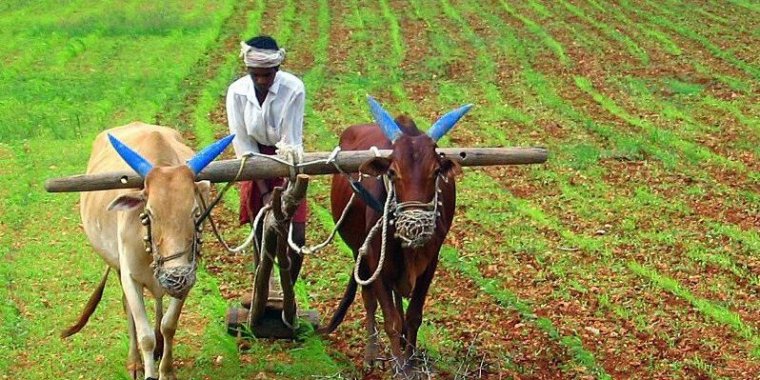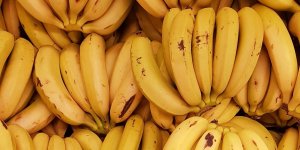| News / Science News |
Ridding salts of the earth with gypsum, organic matter
Wheat and rice farming on the vast Indo-Gangetic plains, affected by excessive salts in the soil, can be cost-effectively improved by treatment with gypsum and organic manure followed by sowing with salt-tolerant crop varieties, a study says.

India farming. Photo: Copyright: Ananth BS/Wikimedia Commons
The study says that India has 2.8 million hectares of land, mostly in the Indo-Gangetic alluvial plains, that are ‘sodic’ and that can be recovered by treating it for excess sodium.
Sodic soils restrict the movement of water and air in the soil, affecting the growth of plants. Associated problems include shallow wetting zones, temporary waterlogging and diminished water storage in the root zone, researchers behind the study explain.
Globally, more than 833 million hectares of land have salt-affected soils, especially in the arid or semi-arid environments of Africa, Asia and Latin America, according to the Food and Agriculture Organization (FAO).
Between 20 and 50 per cent of irrigated soils are too salty, leaving more than 1.5 billion people worldwide to face challenges caused by soil degradation.
Currently, soil remediation of sodic soils in India relies on the addition of 50 per cent gypsum followed by cultivating traditional varieties of rice and wheat on the land. But, this is increasingly unaffordable for smallholders who farm on the upper Indo-Gangetic plains which extend over 150,000 square kilometres.
Each hectare of sodic soil requires 12 to 16 tonnes of gypsum for remediation which, at US$60 per tonne, is beyond the reach of small and marginal farmers (those having less than one hectare of land), the study says.
The researchers estimated that 60 per cent of the total cost of reclamation goes towards gypsum — a mineral which is becoming scarce because of demand for non-agricultural uses.
According to the study, conducted in the Hardoi district on the Indo-Gangetic plains of Uttar Pradesh state, treatment using 25 per cent gypsum, 10 per cent magnesium and pressmud (organic fertiliser made from sugar cane residue), followed by sowing with salt-resistant varieties of wheat and rice, doubled crop productivity.
India, a major sugarcane grower, produces about 12 million tonnes of pressmud annually. Pressmud contains nutrients, organic matter and high amounts of calcium sulphate, which supplies calcium directly to the soil to replace excess sodium.
Vinay Kumar Mishra, an author of the study and director of the Indian Council of Agricultural Research’s laboratory complex at Barapani, in Meghalaya state, tells that accumulation of salts in soils is a major challenge for food production in vast areas and reclamation of soils too expensive for small and marginal farmers.
K.C. Jisha, assistant professor in plant physiology at the Muslim Education Society College, in Kodungallur, Kerala and a researcher on soil chemistry, said that sodic soils have higher concentrations of sodium than saline soils which must be treated if they are to support agriculture efficiently.
“Saline soils causes a ‘chemical drought’ in soils but not sodic soils which can work to cause water-logging. Soil sodicity is easier to correct than high salinity levels in the soil but management of salinity and sodicity becomes complicated when both occur in the same soil together,” Jisha told.
Soils turn sodic or saline from natural causes, intensive farming, poor drainage and limited availability of irrigation water.
During the wet season, salts accumulate in the low-lying areas and in the dry season they concentrate due to high evaporation of water, resulting in increased sodium ions in the soil. (SciDev.Net)
YOU MAY ALSO LIKE





